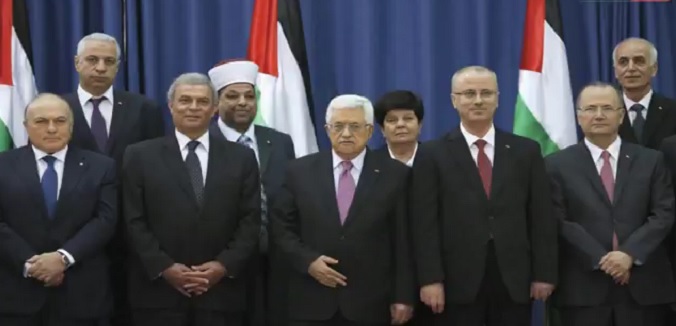An article published Wednesday by one of Israel’s top veteran journalists assesses that the Palestinian Hamas faction has opted to follow the “Hezbollah model” – “bullets plus ballots” – in establishing a unity government with the rival Fatah faction:
For Hamas, this means integrating into the general political system while retaining independent, well-equipped armed forces and striving to maintain control of Gaza through its existing grip on local bureaucracy, its wide network of social institutions, and, of course, its 20,000 well-trained military cadres and security personnel.
The group has recruited no less than 50,000 employees to the public sector since its June 2007 military takeover of the territory. At the same time, Hamas seems determined to exploit the reconciliation agreement as a means of resuscitating its political organization and clandestine terrorist activities in the West Bank.
That read of the situation – under which Hamas has sought to follow Hezbollah’s example of establishing a better-armed entity-within-an-entity in the midst a weaker central government – has over the last week approached something of conventional wisdom. Hamas figures had openly bragged about it, getting the quick attention of both U.S. analysts and Arabic-language Al Arabiya [Arabic].
Over the weekend Jonathan Rynhold, a senior researcher at the BESA Center for Strategic Studies at Bar Ilan University, told USA Today that Jerusalem is concerned Hamas “will become like Hezbollah in Lebanon before 2007 – an armed militia not responsible to the government operating not only in Gaza.” USA Today‘s foreign affairs reporter Oren Dorell in turn brought the issue up in Monday’s State Department press briefing.
Dr. Kobi Michael, a former deputy director general at Israel’s Ministry of Strategic Affairs, told reporters on the same day that the dynamic could be described as “the Lebanonization of the Palestinian arena,” at the same time that Jonathan Schanzer, vice president of research at the Foundation for Defense of Democracies (FDD), extensively analyzed it under the headline “The Lebanonization of the Palestinians.”
By Tuesday Hudson Institute Senior Fellow Lee Smith had also published about the “Hezbollah model”:
The administration will also be able to cite a regional precedent for its likely next step of embracing the new Palestinian “unity government” as a “partner for peace” while claiming that America is not funding terrorism. Hamas officials boast that they are now employing the “Hezbollah model”—i.e., becoming a political party that avoids responsibility for governance, while also maintaining an independent military organization that engages in terrorism. In other words, the PA will serve as legitimate cover while the Islamic resistance continues to wage its war of liberation against Israel. After all, Washington continues to fund the Lebanese Armed Forces, even as it is common knowledge that the LAF is under Hezbollah control. So, why wouldn’t the White House fund the PA?
The potential implications of the model for the unity government – and for a future Palestinian state – are still being unpacked. Yaari’s article contextualized Hamas’s move as the result of meetings held between the terror organization’s top figures and those from Iran and Hezbollah, after which “the group’s representatives were advised to adopt a more ambitious plan than merely defending Gaza, namely, by contesting Fatah in its own West Bank territory instead.”
The report is in line with deepening concerns that the unity pact will function as a lifeline for Hamas, which has been seeking to halt a year-long downward spiral. Yaari further revealed that, in the Hamas-Hezbollah and Hamas-Iran meetings, “Hezbollah’s modus operandi in Lebanon — which can be summed up as “add ballots to your bullets” — was pushed as a model to be emulated.”
[Photo: Newsloop Top News / YouTube]




